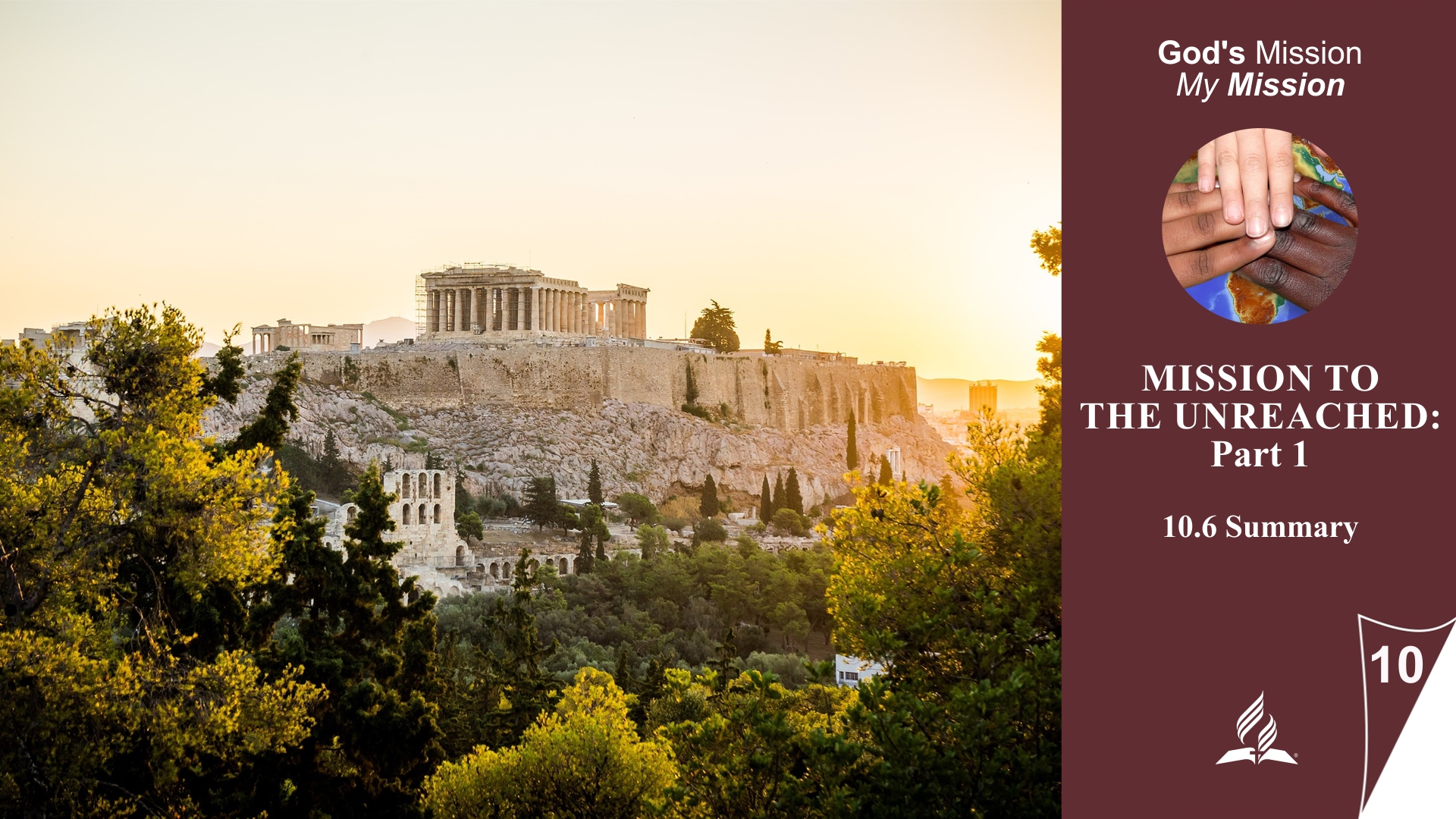

Lesson 10, “Mission to the Unreached – Part 1,” provides a fascinating and instructive exploration of Paul’s missionary strategies in Athens, as documented in Acts 17. The central message of this lesson lies in Paul’s skillful approach to the culture, beliefs, and faith of the Athenians to share the Gospel in a way accessible to them.
A standout feature is Paul’s ability to find common ground and build upon it. He doesn’t begin by criticizing the false beliefs of the Athenians but initially praises their spiritual awareness and sincerity. By quoting their own authors, Paul shows respect for their culture and education. This tactic of establishing familiarity with people’s beliefs serves as an effective bridge for the Gospel.
Also notable is Paul’s emphasis on the created world and God’s role as the Creator. Nature and its order serve as a universal experience and provide a common starting point for conversations about faith. This approach allows for an intuitive connection to spiritual questions and highlights the power and beauty of the Creator.
Another key aspect is the focus on the resurrection of Jesus as verifiable evidence. Paul manages to present the message of the resurrection in a way that is open to investigation. This underscores the importance of allowing people the opportunity to hear and understand the message before making a decision.
In summary, Lesson 10 shows that missionary work requires more than a simple delivery of the message. It demands a deep understanding of the culture and beliefs of the people, a willingness to find common ground, and the ability to present the message of the Gospel skillfully and respectfully. Paul serves as an inspiring example of how to effectively share God’s love amid diverse beliefs.
The lessons from Mission to the Unreached – Part 1 provide us with important insights and connections for our daily lives and faith:
-
Cultural Understanding: Paul’s ability to understand and respect the culture of the Athenians reminds us of the importance of understanding the cultures and beliefs of the people around us. In our daily lives, we should strive to understand the perspectives of others to create a bridge for the Gospel.
-
Seeking Common Ground: The emphasis on commonalities in the lesson reminds us that in our relationships, we should seek connections. In our daily lives, we can look for ways in which faith can create common ground, rather than being separated by differences.
-
Natural World as Witness: The emphasis on the created world as a witness to God’s existence reminds us of how important it is to recognize God’s traces in nature. In our daily lives, we can consciously take time to appreciate the beauty and order of creation and use it as a foundation for conversations about faith.
-
Verifiable Evidence of Resurrection: The emphasis on the resurrection of Jesus as verifiable evidence encourages us to build our beliefs on solid grounds. In our daily lives, we can be willing to talk about the foundations of our faith and invite people to explore the evidence of the Gospel.
-
Respectful Testimony: Paul’s respectful approach teaches us how important it is to package our testimony in love and respect. In our daily lives, we can focus on creating an atmosphere of appreciation when we talk about our faith.
Overall, the lesson encourages us to view faith not in isolation but embedded in our daily lives. It challenges us to consciously approach people around us, find common ground, and share our message of the Gospel with respect and love.
Visited 33 times, 1 visit(s) today






